
Malaysian cuisine is well-loved for its diversity, complexity, and an amalgamation of vibrant flavors, which draw influences across Malay, Chinese, Indian, Thai, Indonesian, and Eurasian culinary traditions. The result? A spectacular showcase in variety that is almost unheard of anywhere else in the world! So, join us as we explore some of the many must-try Malaysian dishes the locals would certainly approve of.

Banana Leaf Rice is a traditional South Indian dish that is widely popular in Malaysia, especially amongst the Tamil community. It is a complete meal consisting of steamed white rice served on a banana leaf, along with an assortment of side dishes. These can include dhal, sambar, a variety of vegetables and meat curries, fried fishes, chutneys and pickles and is incomplete without a side of poppadom.
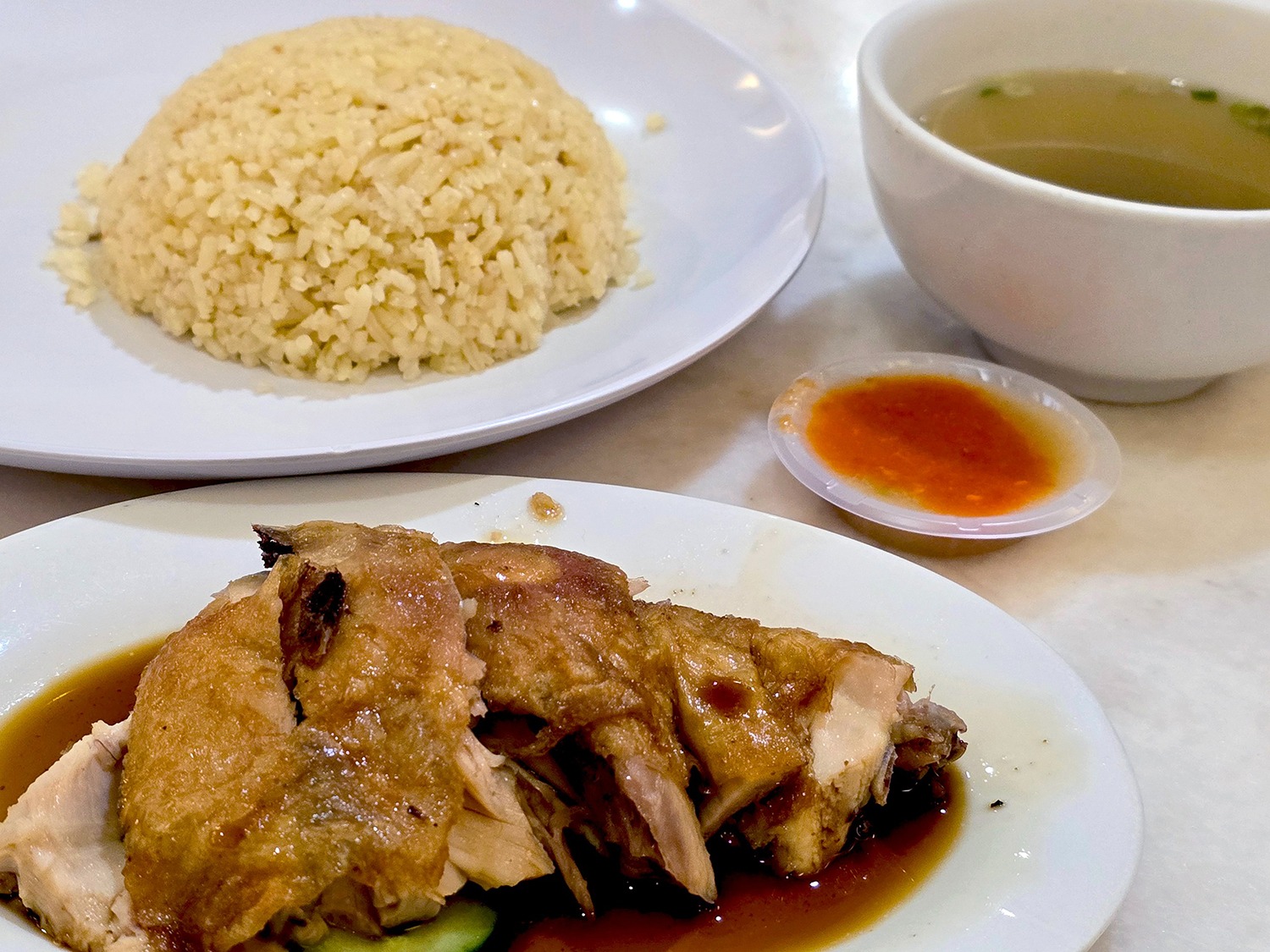
Nasi Ayam, or Chicken Rice, is arguably one of Malaysia’s most iconic dishes. The rice is served with a special rice, which is cooked in chicken broth and seasoned with garlic, ginger, pandan leaves, and other aromatics. The chicken may be steamed, roasted, or poached, depending on the recipe and regional variations. Finishing the dish are its condiments, usually soy sauce, a tangy chili sauce, and sometimes a ginger paste.

Nasi Briyani is a fragrant and flavorful rice dish that originated in the Indian subcontinent. In Malaysia however, a variation of the dish is called Nasi Briyani Gam, which hails from Johor. The main difference is that Nasi Briyani Gam cooks its meat with the rice, giving the dish a rich, deep flavor. Sides for Nasi Briyani tend to be cooling vegetables, like cucumber raita or acars.

Nasi Campur, or Mixed Rice, is a simple, yet satisfying dish. Not a specific type of food, but rather, literally a plate of ‘mixed’ rice that gives you the option to mix-and-match a variety of side dishes. The selection of side dishes you get are based entirely on the stall or eatery you’re getting your Nasi Campur from, which makes it a fun and exciting experience too.

Nasi Dagang is a traditional Malaysian dish that originates from the Northeastern states of Terengganu and Kelantan. A combination of white rice and glutinous rice is cooked with coconut milk, ginger, and fenugreek seeds, infusing the rice with a fragrant aroma and a rich, creamy flavor. The accompanying curry is typically either a fish-based Gulai Ikan Tongkol, or a chicken-based Gulai Ayam.

Originating from Penang is the popular Malaysian dish, Nasi Kandar. The centerpiece of Nasi Kandar is steamed white rice, which is typically served with an assortment of curries and side dishes. Common curries as accompaniment include chicken curry, beef curry, fish curry, and squid curry, each cooked with a blend of aromatic spices and herbs.

Nasi Kerabu is another traditional Malay dish that hails from the Northeastern states of Malaysia. Nasi Kerabu features blue-tinted rice as its main component, infused with a mixture of herbs, spices and butterfly pea flowers. The rice is often served alongside fresh herbs and vegetables, along with a fried or grilled protein option such as fried fish, daging bakar (grilled beef) and ayam bakar (grilled chicken).

Nasi Lemak is a quintessentially Malaysian dish, perfectly encapsulating the country’s diverse flavors and background. Fragrant rice is cooked in coconut milk and pandan leaves, and typically served with a side of sambal (spicy chili jam), anchovies, peanuts, hard-boiled egg and cucumber slices. You can also get it with other accompaniments such as fried chicken, fried fish, fried squid, or beef rendang.

A classic Malaysian rice dish, characterized by its vibrant red coloring, Nasi Tomato (‘tomato rice’) is cooked in a mixture of tomato puree, local herbs and spices that imbue the dish with a wonderful aroma. Nasi Tomato is often served with a variety of side dishes, the most popular of which, is a chicken dish, Ayam Masak Merah. On the side, you also typically will get a side of acar made up of pickled local fruits and vegetables.

Murtabak is made using a thin dough, which is then filled with a mixture of minced meat (often beef or chicken), onions, eggs, and a variety of spices. When it comes to Ramadhan bazaars, Murtabak is practically a must-have, and you’d be remiss to find a single bazaar without at least one Murtabak stall. Pickled onions and curry are typically served on the side with Murtabak, rounding out its flavor profile.

Simplicity is king when it comes to Roti Bakar Kaya, also known as Kaya Toast. As its name implies, it simply consists of toasted bread slices spread with kaya, a sweet and creamy coconut jam, and often served with a slab of butter sandwiched in between. Some restaurants toast it on an open charcoal flame, imbuing it with a rich aroma and crispness.
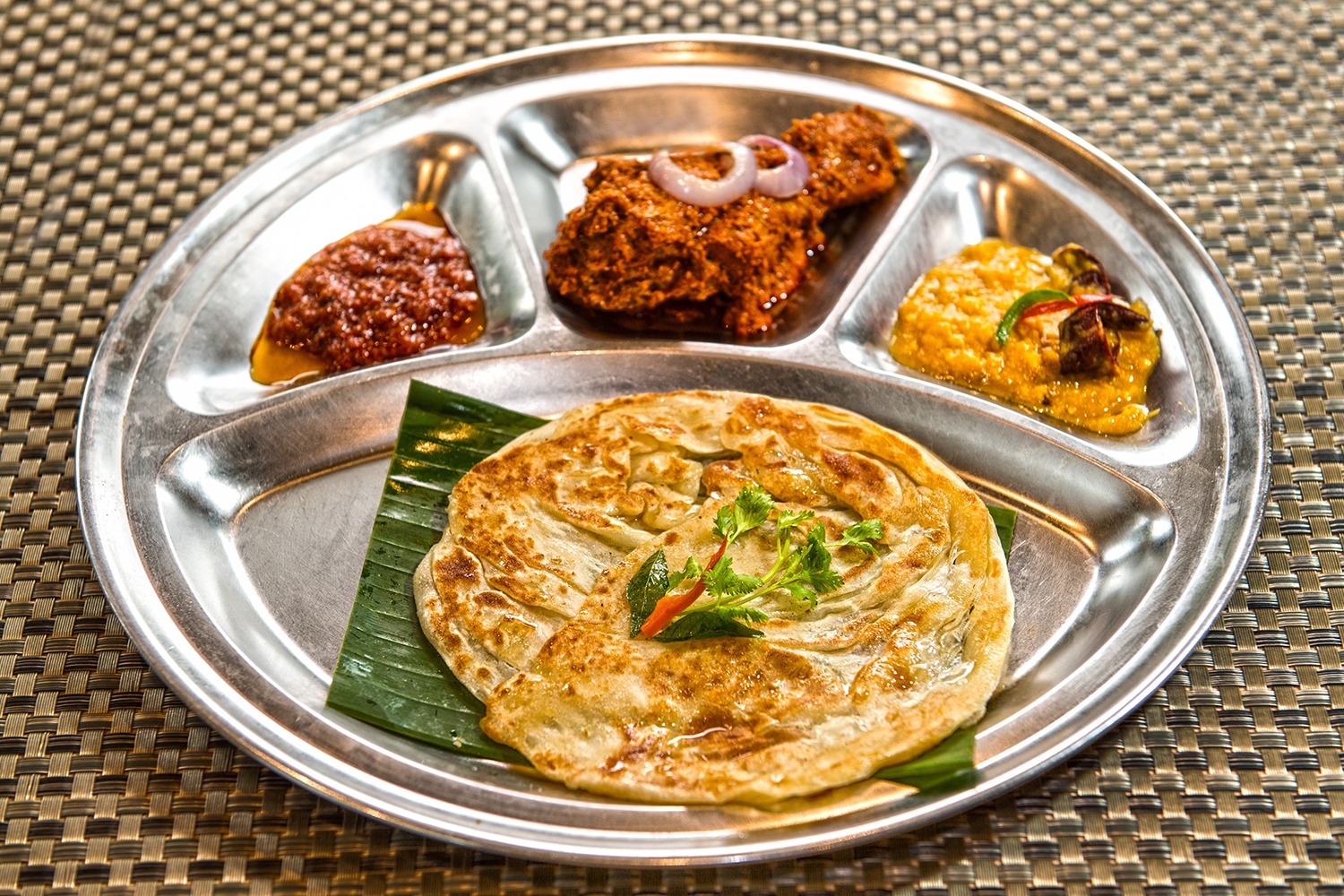
Ask any Malaysian what the best Mamak breakfast staple is, and chances are you’ll get this as the answer. Roti Canai is a flatbread that is much loved and enjoyed across the nation. Roti Canai is characterized by its flaky, crispy exterior and soft, chewy interior and is typically served hot and fresh off the griddle, with a side of curry or dhal as dipping. It was also famously recognized by Taste Atlas as the best bread in the world, a great honor for such a humble dish.

Roti Jala is a traditional Malaysian delicacy, featuring a thin pancake that is often served with curry or other savory dishes. The batter for Roti Jala is made from a simple mixture of all-purpose flour, eggs, coconut milk, water, and a pinch of salt. The batter is then drizzled in a circular motion or criss-cross pattern onto a hot greased skillet or flat pan. As the batter cooks, it forms a delicate lace pattern resembling a net or lattice.
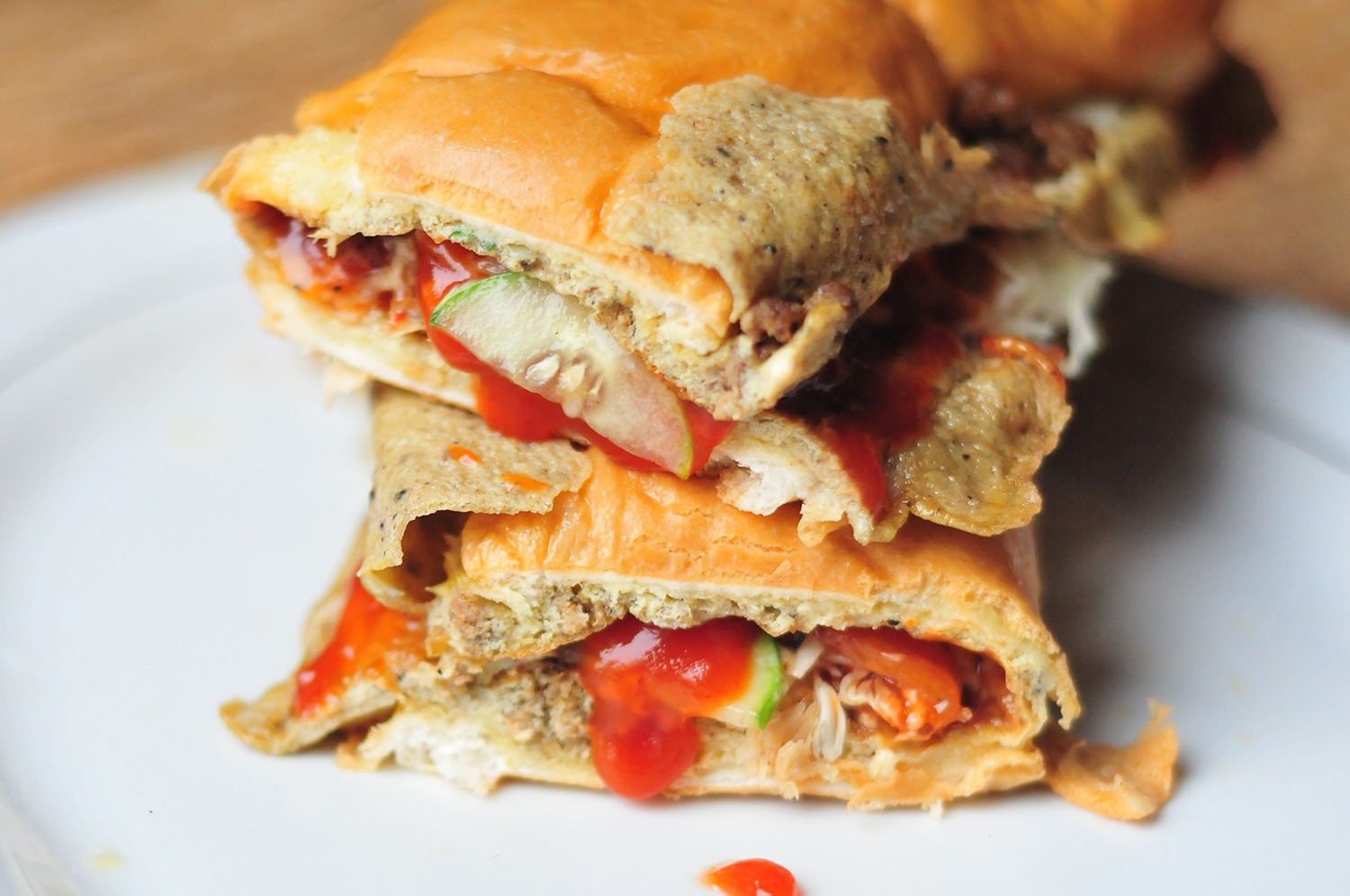
When it comes to bazaar food, Roti John is another great hallmark. Minced meat is typically seasoned and cooked with chopped onions until brown and fragrant. Beaten eggs are then poured over the mixture and allowed to cook until set, creating a thick and savory filling. Once the meat is fully cooked, the Roti John is set aside and then dressed with sauces and mayonnaise. Most Roti John stalls have their own signature additions, so have fun finding your favorite!

A true Mamak specialty, Roti Tissue is a spin on the Roti Canai, but enjoyed as a sweet snack. As per its name suggests, it is lighter, thinner and crispier in texture, and is usually added with condensed milk or sugar for a sweeter profile. The spectacle of the dish often comes from Mamak restaurants making the Roti Tissue incredibly tall, which is not just delicious but also makes for great social media content. Despite this, it remains a humble street food, and one that anyone can enjoy for an affordable price.

Char Kuey Teow is a well-known, but semi-contentious local dish. The traditional Chinese version sees flat rice noodles fried until slightly charred, infusing the flavors of the seasonings into the dish using high heat. However, in recent years, a different take on the dish has appeared, featuring the same flat rice noodles in a flavourful sauce and pickled green chilies.

Curry Mee, also known as Curry Laksa, is a popular noodle dish that is widely enjoyed in Malaysia. It is characterized by its rich and fragrant coconut curry broth, which is typically served with noodles and proteins such as chicken, shrimp, or tofu. The curry broth is the star of the dish and is made using a blend of ingredients such as coconut milk, curry paste and a variety of herbs and spices.

Malaysian-style Hokkien Mee typically consists of thick yellow noodles, stir-fried in a savory sauce made from soy sauce, oyster sauce, and sometimes fermented shrimp paste in a blazing wok. The noodles are first stir-fried with garlic and sometimes chili paste before other ingredients such as prawns, meat and vegetables are added and cooked to tender perfection.

Laksa is a popular noodle dish that comes in many forms depending on where you’re from. Penang’s version is the Assam Laksa, featuring thick rice noodles that are steeped in a sour and spicy broth made from sardines, chillies and lime juice. Johor Laksa trades rice noodles for spaghetti, and features a much milkier, richer, gravy-like sauce. Laksa Sarawak meanwhile features a rich broth made with a base of shrimp paste, tamarind and coconut milk.
Next up, we have the lesser-known Laksa Pangkor. The broth of Laksa Pangkor is typically made with a combination of coconut milk, fish stock, and a blend of aromatic spices and herbs. Finally, Laksa Utara, which hails from North Malaysia, is cooked with a mackerel and tamarind based broth.

Mee Goreng, also known as ‘fried noodles’ in Malay, is an ever-present hawker food in Malaysia. Yellow egg noodles are cooked with a combination of ingredients such as spices, vegetables, meat and sauces to create a warm and hearty dish. Every culture in Malaysia has their own version of Mee Goreng, so put it on your list to try them all!

The main components of Mee Rebus include yellow egg noodles, a thick and aromatic gravy made from a mixture of sweet potatoes, and toppings like boiled egg, fried tofu and bean sprouts. The secret ingredient in the gravy for Mee Rebus is truly what sets it apart - made by simmering sweet potatoes until they are soft, then blending them into a smooth paste. This paste is then cooked down with other ingredients to create a thick and flavorful sauce.

Mee Soup has been enjoying more traction all over Malaysia as of late. Mee Soup is essentially just noodles in a beef or chicken broth, although the beef variation has always been a fair bit more popular. The soup is spiced and seasoned to fit local tastes, making for a warm and hearty meal. Condiments like chili sauce or pickled chilies may also be offered on the side.

Wantan Noodles are a highlight of the local Cantonese cuisine, featuring thin and springy egg noodles, which are cooked in hot water, before either being placed into a clear broth, or into a rich soy sauce-based flavoring oil. Wantan Noodle is often served with a variety of toppings, including slices of char siu, dumplings and leafy vegetables.

Asam Pedas is a traditional Malay dish known for its bold and tangy flavor profile. It is a sour and spicy stew that typically features fish or seafood cooked in a thick, tangy broth alongside tamarind and various aromatic spices. The most popular variant of this dish is made with stingray meat, and served with steaming hot white rice.

Bak Kut Teh is a traditional Chinese soup dish that translates to "meat bone tea" in the Hokkien dialect. The main ingredients for Bak Kut Teh include pork ribs, various Chinese herbs and spices, garlic, soy sauce, and sometimes also dried mushrooms or tofu puffs. You generally won’t find this in bazaars, though it remains as a must-try Malaysian dish.
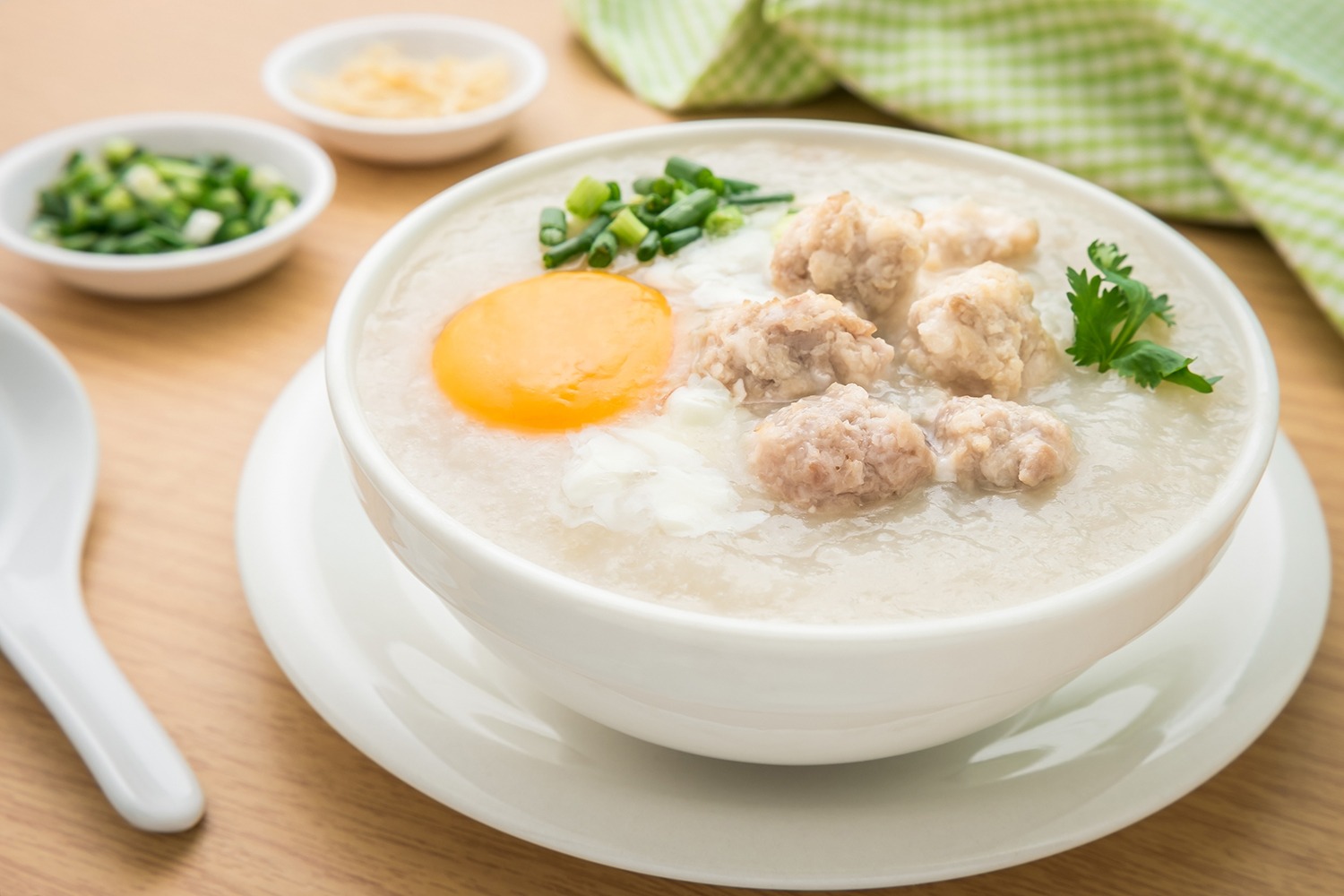
Bubur, also known as Congee, is a comforting and versatile dish common in Asian countries. Rice is cooked in water or broth until it breaks down into a smooth and creamy consistency. Additional ingredients such as meat and vegetables are added during the cooking process and allowed to simmer until tender and fully cooked. In Malaysia, this may also be served with side dishes.

Kari, or Curry, is an umbrella term that covers a number of dishes, especially here in Malaysia. Everything from the classic Kari Ayam to the rich Lamb Karahi to even Thai Green Curry sit squarely in this category. In Malaysia however, the most common form of this dish comes from the Indian, Malay and Nyonya communities. They typically feature chicken, fish or lamb with potatoes, in a heavily spiced and seasoned curry gravy.

Masak Lemak is another traditional Malay dish that is made with a coconut milk-based broth. Unlike many Malaysian dishes though, Masak Lemak is mellow, and quite gentle on the palate. While proteins like chicken can be added to Masak Lemak, the star of the show here are usually the vegetables like eggplant, carrots, long beans and cabbage.

Ayam Percik is a classic Malaysian dish consisting of grilled or roasted chicken that has been marinated in a flavorful blend of spices and coconut milk, then served with a rich and aromatic sauce. The flavorful sauce, made from the leftover marinade, coconut milk, and other ingredients, is then simmered until thickened and has a deliciously creamy consistency.

Ikan Bakar, which translates to ‘Grilled Fish’, refers to a specific Malaysian method of cooking. Malaysian Ikan Bakar is cooked on either an open fire grill or a flat pan, whilst the fish is being covered in spicy marinade and wrapped in banana leaves. During the grilling process, the fish is often basted with extra marinade or oil to help it retain moisture and flavor. It is served with local condiments like air asam or sambal belacan.

One of the more unique street foods you will come across in local bazaars, the Otak-otak is a type of spice fish cake with a pasty consistency. It is made using a mixture of ground fish meat, coconut milk, spices, and herbs, wrapped in banana leaves and grilled or steamed until cooked. The banana leaves not only impart a subtle aroma to the dish, but also help to hold the mixture together during cooking.

Satar is a snack food that originated from the East Coast. It is a type of savory fish cake or fish paste that is wrapped in banana leaves then grilled over charcoal. Similar to the Otak-otak, it differs mainly by its different blend of spices, which result in a completely different flavor profile and serving style.

A popular Southeast Asian dish, Satay is a meat skewer, typically chicken, beef or lamb that are skewered and grilled. The meat is typically cut into small cubes or thin slices and threaded onto bamboo skewers. The grilling process infuses the meat with a smoky flavor and caramelizes the marinade, resulting in juicy and flavorful satay. It is then served with an accompanying peanut sauce on the side.

The humble Karipap, more well-known as the Curry Puff, is yet another beloved snack food in Malaysia, which is made using puff pastry that is loaded with a delectable potato, meat and curry filling, and then folded into a half-moon shape. It is then deep-fried until crispy and golden, resulting in the crunchy and flaky pastry that everyone loves and enjoys. Another revered choice, the Taste Atlas ranked the humble Karipap at number five on their world’s best pastry list, above other world-famous pastries including Croissants and Kunafa - what an honor indeed!

Craving something unique? Lor Bak is a Hokkien Chinese snack that features various ingredients such as marinated minced pork, shrimp and water chestnuts. They are heavily spiced, wrapped in bean curd skin, then deep-fried until crispy. Lor Bak is served hot and crisp, with a side of special sauce or chili sauce for a nice blend of flavors.

Oyster Omelette was originally a popular street food hailing from Fujian, China, so it is no surprise that it has enjoyed such a quick adoption here in Malaysia. For the uninitiated, the dish is a savory egg omelette made using fresh oysters, eggs, and a starch-based batter. Texture-wise, it is more pancake-like than an omelette, and is typically served hot off the griddle with a side of tangy chili sauce.

Pisang Goreng, also known as Banana Fritters, is also one of Malaysia’s most popular snack foods. Made from ripe bananas coated in batter and deep-fried until crispy, it is as simple as it is delicious. The bananas get a custardy texture and taste sweet from the heat during the frying process. Eating them as is, is the most common way to enjoy this treat, though nowadays it is possible to get them with toppings like cheese and chocolate.

Pulut Panggang is a traditional Malaysian snack or street food that consists of grilled glutinous rice parcels filled with a savory mixture. The filling typically consists of a mixture of grated coconut, dried shrimp, shallots, garlic, chili, tamarind paste, and sometimes also minced meat or fish. Pulut Panggang is typically served as a snack or appetizer, and simply enjoyed on its own to allow its strong flavor profile to come through perfectly.
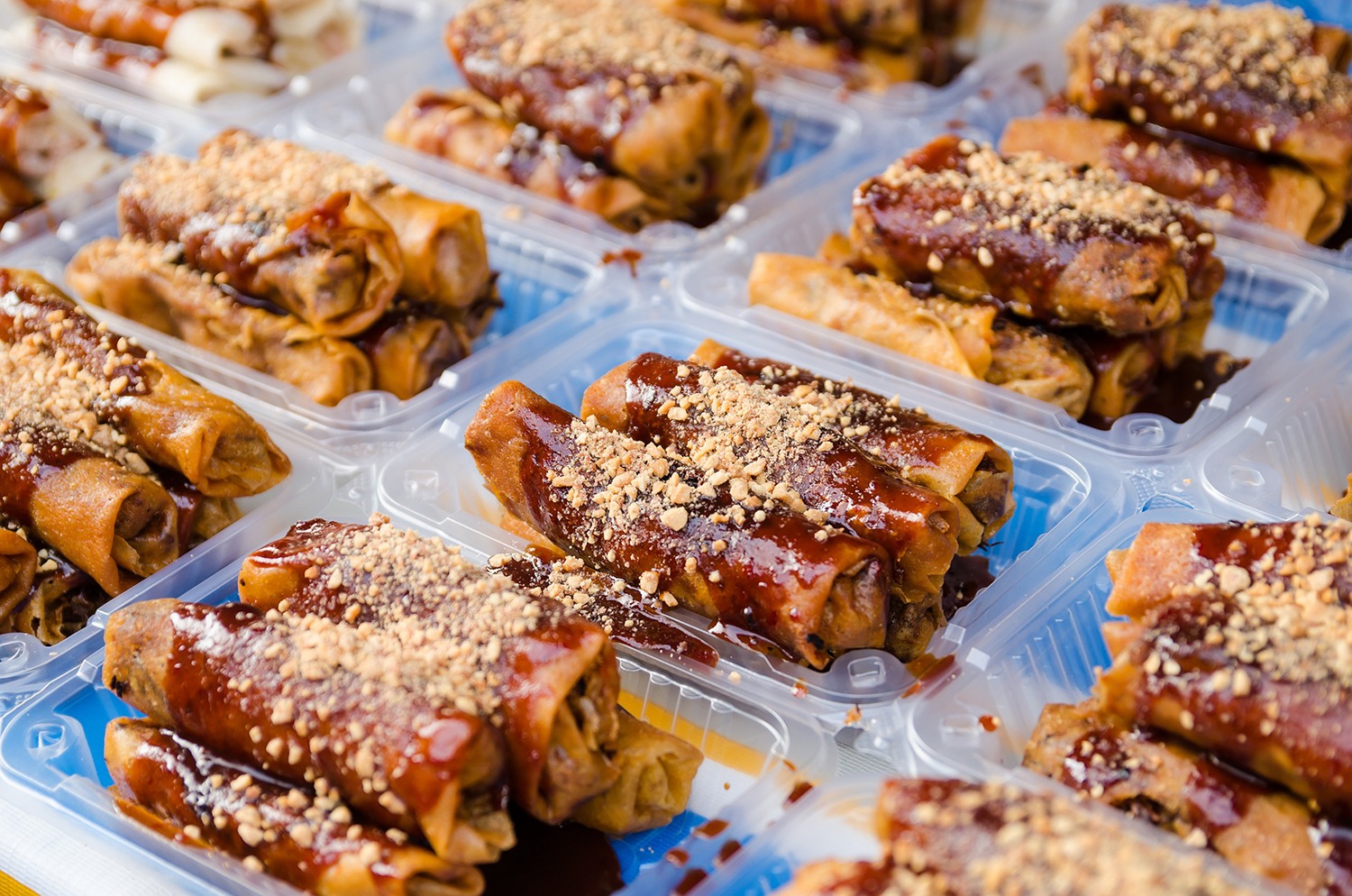
Popiah, more commonly known as Spring Rolls, come in two varieties in bazaars. Popiah Goreng is the more common, featuring deep fried Spring Rolls that typically come filled with small amounts of veggies and meat. Popiah Basah, while harder to find, are a feature at Ramadhan bazaars. They are softer and served with rich fillings of chili sauce, crunchy bits and vegetables.

Rojak is a popular dish known for its unique blend of sweet, spicy, and tangy flavors. It is served as a mixed salad combining a variety of fruits, vegetables, and other ingredients coated in a thick, sweet and spicy dressing. This is yet another one of those dishes that has many cultural variations, adding ingredients like fruit or prawn cracklings to the dish.

Our first cold local dessert on our list is Ais Kacang, also known as ABC (Air Batu Campur). This dessert consists of shaved ice topped with various sweet ingredients, condensed milk and syrups. It is a refreshing and colorful treat that is especially easy to enjoy in Malaysia’s sweltering hot weather. Try a variant with ice-cream on top for a richer experience!

Apam Balik is popular in Malaysia as a sweet street food and snack. It is characterized by its crispy edges and soft, fluffy, pancake-like interior with a sweet filling that is usually made of sugar, ground peanuts, and sometimes sweet corn or chocolate. Other variations to jazz up the Apam Balik include chocolate chips, grated cheese and Nutella.

Cendol is a sweet and refreshing treat made with shaved ice, coconut milk, palm sugar syrup, and chewy green rice flour jelly strands, which are also known as cendol. It gained notoriety after being recognized as one of the world’s top 50 desserts by CNN, and as you will experience, is deserving of this distinction.

Putu Bambu is a traditional Malaysian dessert made from steamed rice flour that is filled with palm sugar and served with freshly grated coconut. This surprisingly popular street food can also be seen sold by many vendors during Ramadhan. Different variations have appeared over the years, filling the dessert with peanuts, coconut and even chocolate.

Tepung Pelita is a Malaysian delicacy that consists of two layers: a bottom layer made from a sweet and creamy coconut milk custard, and a top layer made from green-colored rice flour batter. The main ingredients typically include rice flour, coconut milk, pandan leaves for flavor and for its naturally greenish hue, sugar, and sometimes a pinch of salt for flavor balance.

Air Soya, or Soybean Milk, is primarily made from dried soybeans and water. Soybeans are soaked and ground, then strained to extract the milk and finished off with a dash of syrup or brown sugar before serving. This surprisingly long and arduous process takes a long time to truly master to achieve the perfect consistency, taste and aroma. Because of this, high-quality soybean milk is often a much sought-after Malaysian delicacy.

Air Tebu, also known as Sugarcane Juice, is popular in Malaysia as it is in many other tropical countries. Air Tebu is made by extracting the juice from sugarcane stalks through a process of crushing or pressing. The sugarcane passes through a machine that squeezes out the juice, which will then be collected and strained to remove any pulp or impurities.

Goreng Kunyit is one of the more recent staples in Malaysian cuisine, and for good reason. It is relatively affordable, tastes good and suits the local palate perfectly. The name of the dish refers to its cooking method and seasoning, featuring chicken, beef or squid stir-fried with turmeric powder as a main ingredient. It is served with steaming white rice, sweet soy sauce, and extra spicy sambal.

Rice is wrapped in a casing of woven palm leaves then boiled until cooked in order to make Ketupat. It remains as one of the country’s most visually iconic dishes thanks to its presence during special celebrations such as Hari Raya Aidilfitri and Hari Raya Haji. These rice cubes are eaten with Kuah Kacang and Rendang, both of which are also common during these celebrations.
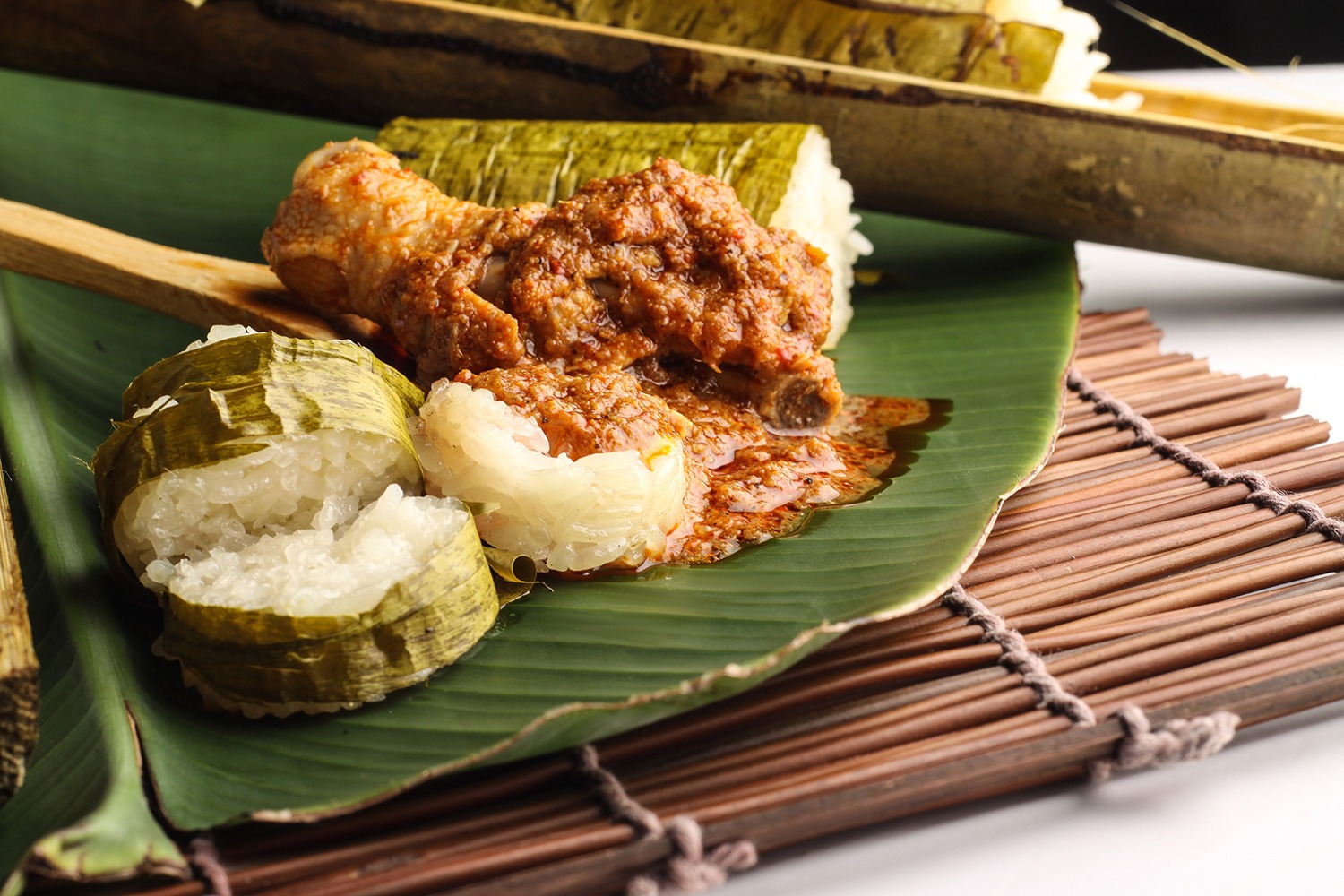
Lemang is a traditional local delicacy made from glutinous rice, coconut milk, and salt, cooked inside a hollowed bamboo tube lined with banana leaves. It is a popular dish during festive occasions such as Hari Raya Aidilfitri and Hari Raya Haji, where it is often served alongside Rendang or other savory dishes. Lemang is commonly found in bazaars, so keep your eyes peeled for them!

Once voted as the world’s tastiest food, Rendang is a rich and flavorful meat dish that is often considered a type of dry curry. Rendang is typically cooked with beef, although other meats such as chicken, goat, or lamb can also be used. Special Rendang spices are grinded into a paste, then cooked with meat and coconut milk until tender to make a rich and flavourful dish.

Sambal Udang is a Malaysian dish consisting of prawns cooked in a spicy chili paste. The key ingredient in Sambal Udang is the sambal, featuring a bevy of sauteed seasonings and ingredients to achieve just the right mix of sweet, sour and spicy flavors. The prawns used in Sambal Udang are typically large, shell-on prawns that are cleaned and deveined before cooking.